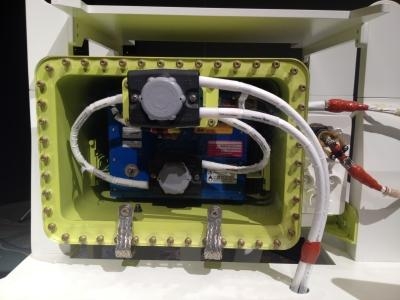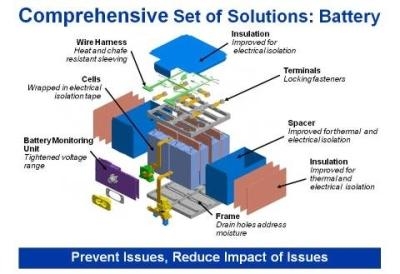Fri, Apr 19, 2013
Instructions To Operators To Be Released Next Week
The FAA has taken the next step in returning the Boeing 787 to flight by approving Boeing's design for modifications to the 787 battery system. The changes are designed to address risks at the battery cell level, the battery level and the aircraft level.

Next week, the FAA will issue instructions to operators for making changes to the aircraft and will publish in the Federal Register the final directive that will allow the 787 to return to service with the battery system modifications. The directive will take effect upon publication. The FAA will require airlines that operate the 787 to install containment and venting systems for the main and auxiliary system batteries, and to replace the batteries and their chargers with modified components.
“Safety of the traveling public is our number one priority. These changes to the 787 battery will ensure the safety of the aircraft and its passengers,” said Transportation Secretary Ray LaHood.
“A team of FAA certification specialists observed rigorous tests we required Boeing to perform and devoted weeks to reviewing detailed analysis of the design changes to reach this decision,” said FAA Administrator Michael Huerta.
To assure proper installation of the new design, the FAA will closely monitor modifications of the aircraft in the U.S. fleet. The FAA will stage teams of inspectors at the modification locations. Any return to service of the modified 787 will only take place after the FAA accepts the work.
As the certifying authority, the FAA will continue to support other authorities around the world as they finalize their own acceptance procedures.

Meanwhile, the French news service AFP reports that, according to a report in Japan's Nikkei Business Daily, that country plans to impose stricter safety requirements on the Dreamliner than will be recommended by the FAA. The paper reports that the Japanese transport ministry will require such things as remote monitoring of battery data, like voltage, and will also require more frequent battery inspections. The current requirement is once every two years.
The ministry is reportedly planning to impose those more stringent measures to address concerns about the airplane's safety on the part of the flying public.
The NTSB will hold a two-day investigative hearing into the Jan. 7 Boeing 787 battery fire on April 23-24 in the NTSB’s Board Room and Conference Center Washington, D.C. The hearing will start at 9 a.m. on both days.
Representatives of the FAA, Boeing, GS-Yuasa and Thales will testify and answer questions from NTSB Board members and technical staff about the design, testing, certification and operation of the lithium-ion battery on the Boeing 787 and the battery fire incident.
(NTSB images)
More News
Aero Linx: Aviators Code Initiative (ACI) Innovative tools advancing aviation safety and offering a vision of excellence for aviators. The ACI materials are for use by aviation pra>[...]
Make Sure You NEVER Miss A New Story From Aero-News Network Do you ever feel like you never see posts from a certain person or page on Facebook or Instagram? Here’s how you c>[...]
From 2016 (YouTube Edition): Who You Gonna Call When You Have a Rocket Engine that Needs a Spacecraft? While at EAA AirVenture 2016, ANN CEO and Editor-In-Chief, Jim Campbell, sat >[...]
"In my opinion, if this isn't an excessive fine, I don't know what is... The odds are good that we're gonna be seeking review in the United States Supreme Court. So we gotta muster>[...]
Expedite Used by ATC when prompt compliance is required to avoid the development of an imminent situation. Expedite climb/descent normally indicates to a pilot that the approximate>[...]
 ANN's Daily Aero-Linx (04.30.25)
ANN's Daily Aero-Linx (04.30.25) ANN FAQ: Turn On Post Notifications
ANN FAQ: Turn On Post Notifications Classic Aero-TV: Agile Aeros Jeff Greason--Disruptive Aerospace Innovations
Classic Aero-TV: Agile Aeros Jeff Greason--Disruptive Aerospace Innovations Aero-News: Quote of the Day (04.30.25)
Aero-News: Quote of the Day (04.30.25) ANN's Daily Aero-Term (04.30.25): Expedite
ANN's Daily Aero-Term (04.30.25): Expedite




